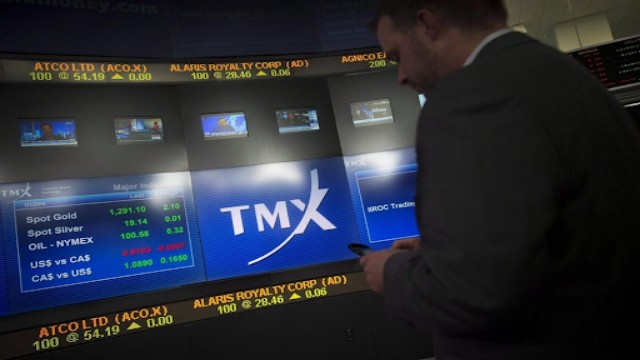
Kris Backus, the broadcast manager at TMX Group Ltd., was seen working inside the company’s broadcast center in Toronto’s financial district on Friday, May 9, 2014. The photo was taken by Darren Calabrese for The Canadian Press.
Canada’s main stock index inched lower late Tuesday morning, led by a drop in energy shares. The S&P/TSX composite index slipped by 14.03 points, sitting at 24,784.56 around midday.
The decline came as oil prices dropped, pulling energy stocks down with them. The energy sector, which often plays a big role in Canada’s markets, felt the impact of lower crude prices. By late morning, the June crude oil contract had fallen by US$1.37 to settle at US$60.68 per barrel. On the other hand, natural gas prices nudged upward, with the June contract rising five cents to US$3.39 per mmBTU.
In contrast, U.S. markets painted a more mixed picture. The Dow Jones Industrial Average gained 183.46 points, reaching 40,411.05. The S&P 500 also edged up by 5.14 points to 4,533.89. However, the Nasdaq composite inched down by 2.81 points to sit at 17,363.32.
Gold prices also retreated during the session. The June gold contract dropped US$22.60 to US$3,325.10 an ounce. Copper prices showed minimal movement, with the July copper contract slipping a single U.S. cent to US$4.88 a pound.
Meanwhile, the Canadian dollar showed a slight decline, trading at 72.16 cents U.S., down from 72.20 cents U.S. the previous day. Currency fluctuations often mirror market shifts, and this minor dip reflects the overall cautious tone in Canadian markets.
The pullback in the TSX appears to be driven by investor reaction to falling commodity prices, particularly crude oil and gold. These two sectors form a major part of Canada’s resource-heavy stock exchange, making any shift in prices instantly felt.
With global markets reacting to inflation signals and interest rate speculation, investors continue to navigate uncertainty. Today’s mixed trading shows that while U.S. investors remain somewhat optimistic, Canadian investors are feeling more cautious—especially when it comes to resource-related stocks.
As the day progresses, market watchers will monitor oil trends, the U.S. Federal Reserve’s next moves, and any global economic signals that could shift the tide.















